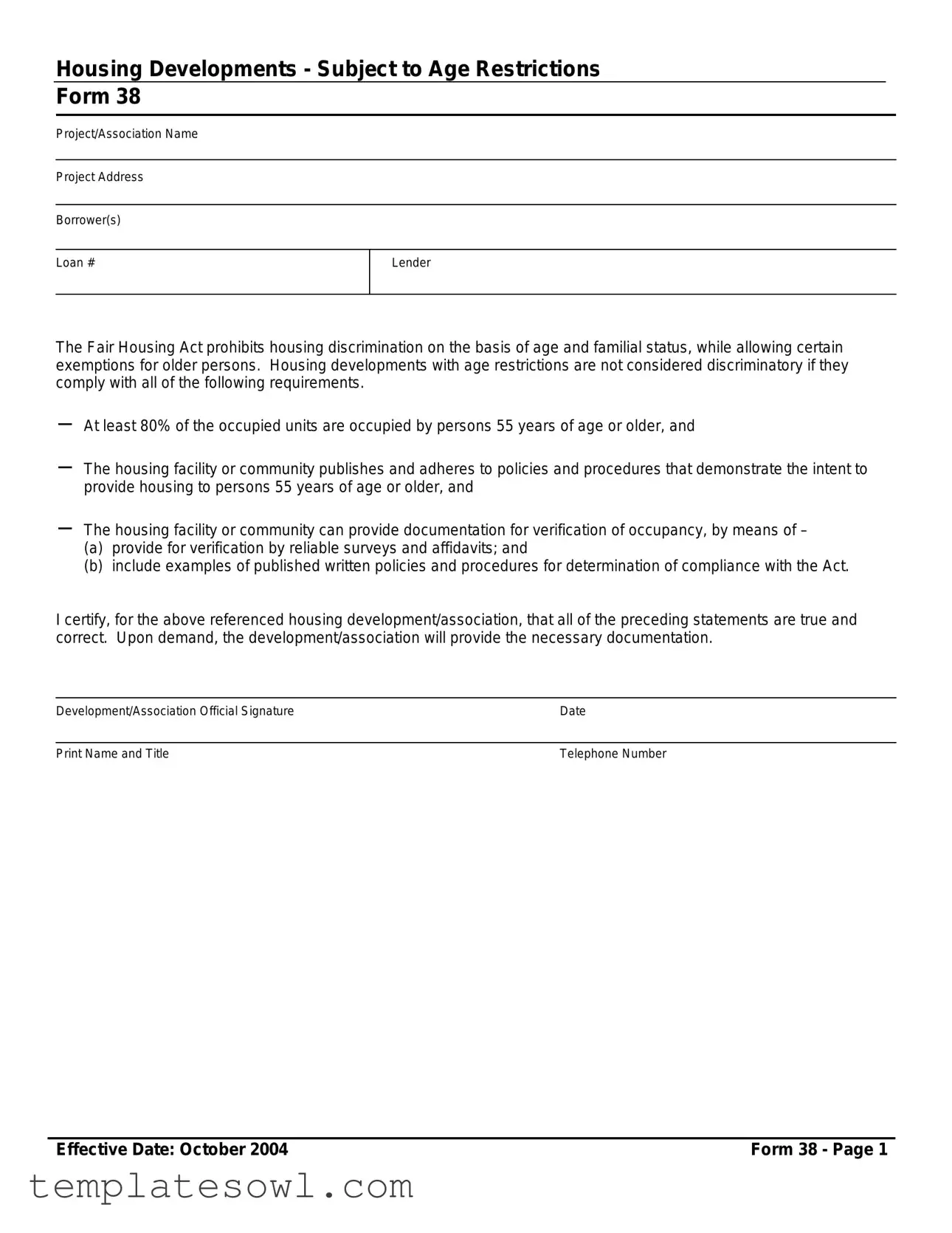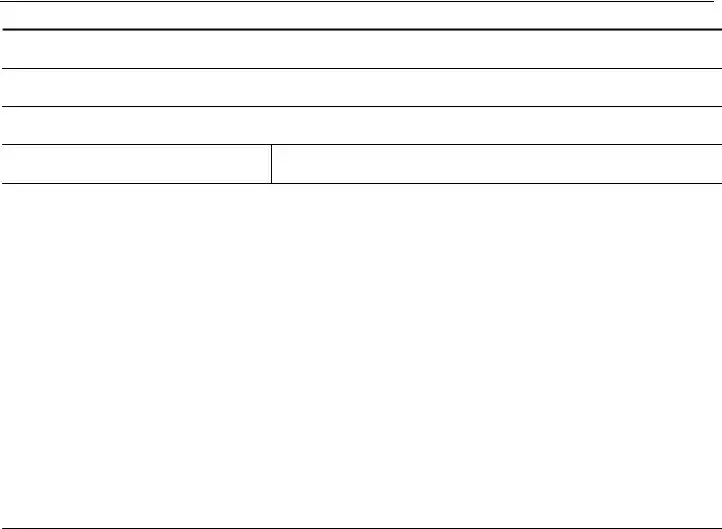What is the purpose of Form 38?
The purpose of Form 38 is to certify that a housing development is subject to age restrictions and complies with the Fair Housing Act. It ensures that at least 80% of the occupied units are occupied by persons aged 55 or older, which allows for certain exemptions regarding housing discrimination based on age and familial status.
Who is responsible for filling out Form 38?
The official representative of the housing development or association is responsible for completing Form 38. This individual must verify that the statements included in the form are accurate and that the community adheres to all required age restrictions.
What are the main requirements for age-restricted housing to avoid discrimination?
For a housing development to be considered compliant with the Fair Housing Act, it must meet three main requirements. First, at least 80% of the occupied units must have residents aged 55 or older. Second, the development must have published policies and procedures that confirm its intent to provide housing to this age group. Finally, the community must be able to produce documentation that verifies compliance, including reliable surveys and written policies.
What type of documentation must a housing development provide?
A housing development must provide documentation that includes reliable surveys and affidavits as proof that it meets the age occupancy requirements. Additionally, it should include written policies that outline how compliance with the Fair Housing Act is determined and maintained.
What does the certification on Form 38 involve?
The certification on Form 38 is a declaration by the official of the housing development or association that all statements contained within the form are true. This involves confirming adherence to the requirements of the Fair Housing Act concerning age restrictions.
What is the effective date of Form 38?
The effective date of Form 38 is October 2004. This timestamp is crucial for ensuring that all measurements and compliance are in alignment with the standards set forth by the Fair Housing Act from that date onward.
How can residents or potential residents confirm compliance with age restrictions?
Residents or potential residents can confirm compliance by requesting to see the housing development’s policies and documentation. The development or association is obligated to provide relevant information upon request, ensuring transparency regarding its adherence to age restrictions.

